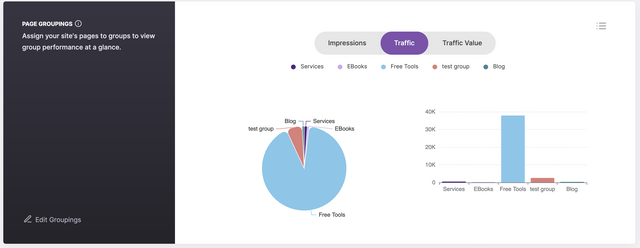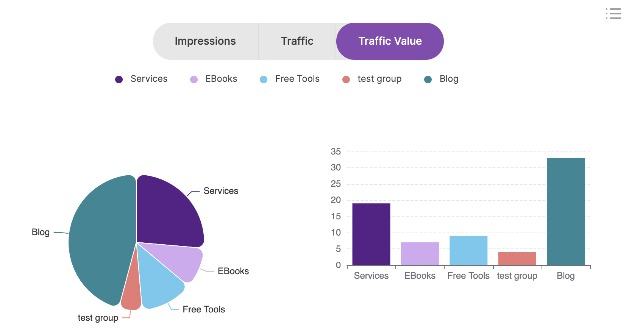5 of the Most Impactful SEO Content Marketing Moves to Improve your Organic Traffic
SEO is a symphony of factors all coming together to make your website sing – or to fall into chaos. With so many aspects of organic search […]
SEO is a symphony of factors all coming together to make your website sing – or to fall into chaos. With so many aspects of organic search to track and manage, where can a content marketer or SEO expert make the most impact? We’ve helped clients rank for thousands of keywords, and we’ve found that the most powerful SEO strategies aren’t fast or simple. There are no shortcuts to success, but with some planning and some smarts, you can see radical changes in your search results. Today we’re going to share our top 5 most impactful SEO content marketing moves to improve organic traffic.
1. Technical Audit Clears the Way for SEO Content Marketing
Let’s start with a technical audit. It’s not a SEO content marketing strategy itself, but if the search engines can’t see your site, it can’t rank.
A baseline audit will ensure that your web page is visible, fast, and responsive. Google is your friend here – between Search Console, PageSpeed Insights, and Think With Google, it’s easy to get a baseline on your blog or site’s general health before moving forward with more detailed work.
A great way to process Google Search Console’s data is LinkGraph’s GSC Dashboard. With unique visualizations and page grouping options, you’ll be excited about using GSC again.
You’ll most likely need a few third-party tools as well, especially if you’re unsure whether the entire site has been indexed and tagged with the appropriate GA codes.
SEO Technical Audit Metrics
A technical SEO audit should cover a few standard metrics, including but not limited to:
- Page speed as measured by total blocking time and largest contentful paint (LCP)
- Current and accurate sitemaps
- Pagination
- Re-directs
- Duplicate content
- All pages visible in Google Analytics
- Mobile rendering/AMP issues
You may find some surprises here, like new content that didn’t get published correctly, or a WordPress update that had the side effect of turning your page speed to molasses. Finalize your audit before starting to fix individual issues. It would be a shame to fix an issue just to find out that there are three other related items that all could have been solved simultaneously.
Search Engine Journal has an in-depth guide to technical SEO audits that can get you started. When you’ve completed your technical audit, you can move on to your on-site content.
2. Basic On-Site Content Audit
Once your site is running optimally and all your technical SEO issues have been resolved, it’s time to look at content. There are about as many ways to do a content audit as there are websites. You’ll want your content audit to cover a variety of aspects for each page, like:
- Content length
- Has keyword focus
- Has meta title & description
- No duplicate keywords
- Optimized for keyword and includes additional focus terms
You may find a series of products that are missing meta titles due to an import error, or an old page of evergreen content that was written without a specific keyword focus. A piece may have used best search engine optimization practices at the time of writing, but SEO content marketing practices change as the web changes.
Not only is Google always upgrading its algorithm, competition is always adding new content. What ranked a year or two ago can get knocked off the first page at any time. It’s a best practice to take stock of your content on a regular basis and update it to new industry standards.
SEO Content Audit Tips
How you actually put this together is up to you. You can start with your clean, complete sitemap from your technical audit and expand it into a spreadsheet with your core data of content length, target search terms, etc.
If you’re using an on-site SEO dashboard, you may be able to view or download some of your SEO content data, like H1s and meta titles for all your posts and pages. There are also content inventory tools to compile your data quickly.
The audit can help you identify easy content strategy wins, like pages that are missing meta titles or descriptions. It’ll also show you more complex issues, like outdated content, pages written without a search query focus, or something that was quality content two years ago but doesn’t work now. Those types of pages need more analysis before you dive into revamping them.
3. Identify underperforming pages with GSC Dashboard
How do you determine which types of content are worth updating or improving? Each content marketer has their own thresholds for what makes a keyword, article, or blog post worth investing in. Usually you’re looking for those niche queries with a high search volume and low competition. But sometimes, those two metrics just aren’t enough.
LinkGraph recently launched a Google Search Console Dashboard that shows you the economic value of website traffic. Additionally, it lets you group pages. Together, you can use these features to see what types of content bring you the highest-value traffic. Then you can quickly choose what to improve and what’s already doing well.
Let’s use LinkGraph itself as an example.
Here’s a snapshot of our traffic:

Out of our five categories, our Free Tools take up the lion’s share of traffic. So we should optimize that great content, right?
Maybe.
Traffic is not all the same. The website traffic we’re getting is for free tools. That’s great, we love that SEOs and content marketers dig our tools! Do those terms also have a good value? How do you even determine a good value?
How The Economic Value of Traffic (EVOT) Influences SEO Content Marketing
We can take CPC as a neutral standard of value – if you could buy the traffic, CPC is what it would cost in ad dollars. What happens when we combine PPC data with traffic data? How does it change what our priorities would be?

There’s a massive shift when we look at the economic value of the traffic we’re receiving. Our blog has low traffic but an incredibly high CPC value for that traffic. We could either pay sky-high PPC rates for ads for the relevant keywords, or we can build out good content for a query that we’re just starting to tap into.
Now there is a caveat here – your keywords and pages all have to keep your business goal and target audience in mind. Our business is SEO consulting and optimization.
While our free tools help us and the SEO community work faster and more accurately, they don’t directly bring us conversions, even if they help with lead generation. This graph puts that valuable information into direct numbers.
The page grouping function is completely a manual process, so you decide which pages to group together. You can group by kind of content(blog vs eBooks vs “ultimate guides”), by content creators, by product category, or any grouping that makes sense for your business. The data pulls directly from GSC’s API, so you know it’s always current and accurate.
4. Improve underperforming content with Page Optimization
With your increased insight of our GSC data and a clear content marketing strategy, it’s time to get writing. Whether you use an in-house team or outsource your content creation, ensuring that the content is optimized for SEO is a headache for content marketers and writers.
It takes time for a writer to get used to the short, punchy style that keeps your target audience engaged online. Training writers to pay attention to keyword density and placement in subheadings is a whole other challenge. And now that Google’s adding NLP to its algorithms, there’s even more focus terms to pay attention to.
Content Optimization Tools
Theoretically, a writer should naturally hit on focus phrases related to your keyword. But humans are not algorithms, and we have a smaller sample size than we think. Do you want to leave your SEO up to chance, even if it is a very eloquent and educated chance?
When SEOs realized that keyword density was a search engine ranking factor, the industry created tools to measure it. As we learned what factors into content, we’ve developed ways to take the guesswork out of writing.
Now there’s a host of page optimization tools that all give you not just keyword density for your main term, but for a list of related keyphrases that pop up in content that currently ranks.
LinkGraph’s Landing Page Optimizer is easy to use and very effective. Log in, enter your keyword, and you’ll get a list of focus phrases and densities, along with a target length for your content.
The Landing Page Optimizer is an interactive tool that shows your progress both in the content and in a sidebar, ensuring that you get the right keyphrases for your content. You’re ready to capitalize on those high CPC keyphrases with stellar, relevant content. There’s only one thing left to do.
5. Consider a link-building campaign
Get your content some exposure! You’ve done your research, written quality content, and now it’s time to get those sweet, sweet backlinks. Mass placement on low-quality sites hasn’t worked for a long time, so a link-building campaign takes time and effort.
You can work on researching, vetting and contacting sites that meet your requirements. Even with our bulk DA/PA backlink checker, it’s still a lot of work to get in touch with the business owners of quality sites. Then there’s waiting for a response, negotiating the placement and actually delivering an article, if necessary. Link-building is hands-on, no doubt about it.
How do we know? We prove it every day by helping our clients rank for their target terms. And, of course, this is how we build our own link network – digital PR.














































































